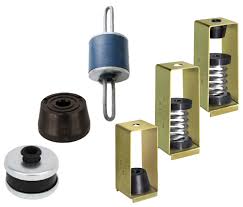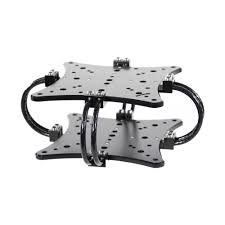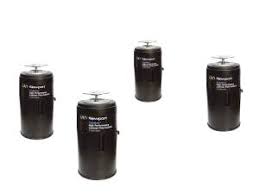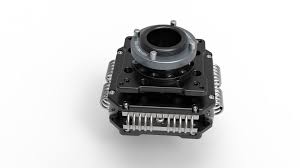Ceiling vibration isolators play a crucial role in improving building acoustics and minimizing the transmission of noise and vibrations. By ...
Ceiling vibration isolators play a crucial role in improving building acoustics and minimizing the transmission of noise and vibrations. By effectively decoupling the ceiling from the structure of a building, these isolators can significantly reduce impact and airborne noise, resulting in a more comfortable and peaceful indoor environment. In this article, we will explore the benefits and applications of using ceiling vibration isolators to enhance building acoustics.
Improving building acoustics with ceiling vibration isolators involves installing these isolators in the ceiling structure to minimize the transmission of noise and vibrations from the floor above. This can help to create a quieter and more peaceful environment in spaces such as offices, classrooms, and residential buildings. Ceiling vibration isolators work by reducing the impact of foot traffic, machinery, and other sources of vibration, thereby improving the overall acoustic performance of the building.
Improving building acoustics with ceiling vibration isolators involves installing these isolators in the ceiling structure to minimize the transmission of noise and vibrations from the floor above. This can help to create a quieter and more peaceful environment in spaces such as offices, classrooms, and residential buildings. Ceiling vibration isolators work by reducing the impact of foot traffic, machinery, and other sources of vibration, thereby improving the overall acoustic performance of the building.
The Importance of Ceiling Vibration Isolators in Commercial Buildings
hvac vibration isolators residential

Ceiling vibration isolators are an essential component in commercial buildings to mitigate the transmission of vibrations from machinery, HVAC systems, and foot traffic to the building structure. These isolators act as a buffer, preventing the transfer of noise and vibration to the ceiling and other parts of the building. This is crucial for maintaining a comfortable and productive environment for occupants, as excessive noise and vibration can lead to discomfort, distraction, and even potential health issues. In addition to improving occupant comfort, ceiling vibration isolators also help protect the building structure from potential damage caused by vibrations. Over time, constant exposure to vibrations can weaken the structural integrity of the building, leading to costly repairs and maintenance. By installing vibration isolators, building owners and managers can prolong the lifespan of the building and reduce long-term maintenance costs. Furthermore, using ceiling vibration isolators can also help ensure the smooth and efficient operation of sensitive equipment and machinery within the building. Many commercial facilities house valuable equipment that is sensitive to vibrations, such as laboratories, medical facilities, and data centers. By reducing the transmission of vibrations, isolators help maintain the proper functioning and accuracy of these systems, ultimately minimizing the risk of costly downtime and repairs. In summary, the importance of ceiling vibration isolators in commercial buildings cannot be overstated. They play a critical role in improving occupant comfort, protecting the building structure, and maintaining the proper functioning of sensitive equipment. As such, building owners and managers should carefully consider the installation of vibration isolators as a crucial investment in the overall functionality and longevity of their commercial facilities.
Choosing the Right Ceiling Vibration Isolators for Your Space

Choosing the right ceiling vibration isolators for your space requires careful consideration of various factors. First, you need to determine the weight of the equipment or machinery that will be suspended from the ceiling. This will dictate the load capacity required for the isolators. Next, consider the type of vibration isolation needed. If you're dealing with low-frequency vibrations, you may opt for rubber isolators. For high-frequency vibrations, neoprene or spring isolators might be more suitable. It's also important to assess the environmental conditions of the space. If it's a high-moisture area, stainless steel isolators would be more appropriate to prevent corrosion. Additionally, take into account any specific installation requirements or space constraints. Some isolators may require a certain amount of clearance or specific mounting configurations. Lastly, consider the long-term maintenance and durability of the isolators. Investing in high-quality isolators upfront can save you time and money in the long run. By carefully evaluating these factors, you can select the right ceiling vibration isolators that will effectively mitigate vibrations and ensure the stability of your space.
The Benefits of Installing Ceiling Vibration Isolators in Offices

Ceiling vibration isolators in offices have several benefits. First, they help to reduce noise and vibrations that can be distracting and disruptive in a work environment. This can improve overall comfort and productivity for employees. Additionally, vibration isolators can help to protect sensitive equipment and machinery from the potential damage caused by excessive vibrations. Finally, these isolators can contribute to a healthier and safer workplace by reducing the risk of structural damage and potential hazards associated with excessive vibrations. Overall, installing ceiling vibration isolators in offices can lead to a more comfortable, productive, and efficient work environment.
Maximizing Comfort with High-Quality Ceiling Vibration Isolators

High-quality ceiling vibration isolators are designed to maximize comfort by reducing the transfer of vibrations and noise from mechanical equipment and other sources through the ceiling structure. These isolators are typically made from durable, resilient materials that effectively isolate and dampen vibrations, preventing them from causing disturbances in the building. By installing high-quality ceiling vibration isolators, building occupants can enjoy a more peaceful and comfortable environment, free from the disruptive effects of vibrations and noise. These isolators are especially beneficial in spaces where quiet and tranquility are important, such as residential buildings, offices, healthcare facilities, and educational institutions. In addition to enhancing comfort, high-quality ceiling vibration isolators can also help protect sensitive equipment and building components from the potentially damaging effects of excessive vibration. By reducing the transmission of vibrations through the ceiling, these isolators can contribute to the overall longevity and performance of the building's infrastructure. Overall, investing in high-quality ceiling vibration isolators can have a significant impact on comfort and well-being while also providing long-term benefits for the building and its occupants.
Understanding the Function of Ceiling Vibration Isolators in Gyms
Ceiling vibration isolators in gyms are designed to reduce the transmission of impact noise and vibrations from the equipment and activities in the gym to the building structure. By mitigating these vibrations, the isolators help to prevent disturbances to occupants in nearby spaces and maintain the structural integrity of the building. The function of these isolators is to absorb and dissipate the energy generated by exercise equipment, weightlifting, and other high-impact activities, thus reducing the transmission of noise and vibrations through the ceiling and into the surrounding areas. This helps to create a more comfortable and enjoyable environment for gym users and minimizes the potential for disruption to other building occupants. Ceiling vibration isolators typically consist of spring or rubber-based systems that are installed between the gym equipment and the structural ceiling. These isolators are selected and designed based on the specific requirements of the gym space, taking into account factors such as the type and weight of equipment, the intensity of use, and the building's structural characteristics. Overall, the function of ceiling vibration isolators in gyms is to promote a quieter, more pleasant environment for both gym users and neighboring building occupants while also protecting the building from the potential damage caused by excessive vibrations.
How Ceiling Vibration Isolators Can Improve Sound Quality in Theaters
Ceiling vibration isolators can improve sound quality in theaters by reducing the transfer of vibrations from the building's structure to the ceiling speakers. This helps to minimize unwanted noise and distortion, allowing the audience to experience clearer and more immersive sound. By isolating the ceiling speakers from the building's vibrations, the isolators can also help to enhance the overall acoustics of the theater, creating a more enjoyable and immersive audio experience for the audience.
Factors to Consider When Selecting Ceiling Vibration Isolators for Restaurants
1. Weight capacity: Ensure that the selected ceiling vibration isolators can handle the weight of the ceiling and any additional fixtures or equipment being supported. 2. Vibration isolation efficiency: Consider the level of vibration isolation required to minimize disturbance to diners and ensure a comfortable dining experience. 3. Installation requirements: Evaluate the ease of installation and the compatibility of the ceiling vibration isolators with the restaurant's existing structure. 4. Seismic and environmental factors: Take into account the location of the restaurant and assess the potential impact of seismic activity or environmental conditions on the performance of the vibration isolators. 5. Maintenance needs: Consider the maintenance requirements of the ceiling vibration isolators to ensure their longevity and continued effectiveness in reducing vibrations. 6. Cost: Compare the cost of different ceiling vibration isolator options while also considering their performance and durability to make an informed decision.
The Role of Ceiling Vibration Isolators in Enhancing Productivity in Industial Spaces
hvac vibration isolation
The role of ceiling vibration isolators in industrial spaces is crucial for enhancing productivity. These isolators are designed to reduce the transmission of mechanical vibrations and noise through the structure of the building. By minimizing the impact of equipment vibrations, such as HVAC systems, machinery, and other industrial processes, these isolators help create a more comfortable and productive work environment for employees. Additionally, they can also protect sensitive equipment and instruments from damage caused by excessive vibrations. Overall, the use of ceiling vibration isolators can significantly contribute to improving the overall efficiency and effectiveness of industrial operations.
In conclusion, using ceiling vibration isolators is an effective way to improve building acoustics by reducing the transmission of sound and vibrations. By installing these isolators, buildings can provide a quieter and more comfortable environment for occupants, ultimately enhancing overall occupant satisfaction and well-being. Additionally, the use of ceiling vibration isolators can help to meet acoustic requirements and regulations, creating a more compliant and efficient building. Therefore, integrating ceiling vibration isolators into building design and construction is a crucial step towards achieving optimal acoustics and enhancing the overall functionality of the space.
See also
https://www.rticontrols.com/vibration-isolation https://www.rubbergroup.com/products/vibration-isolators https://www.mason-ind.com/products/vibration-isolators/